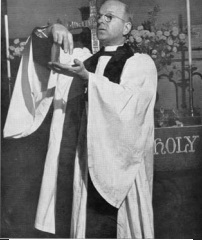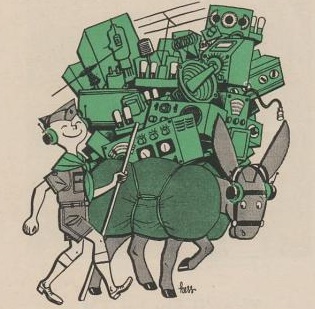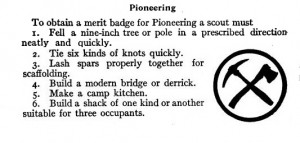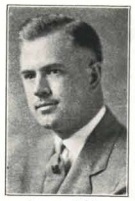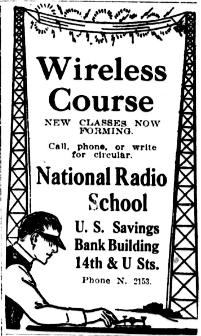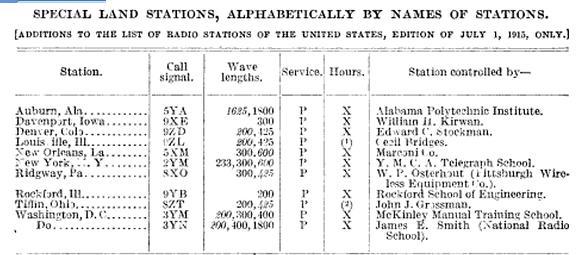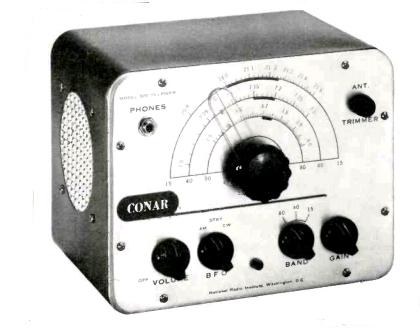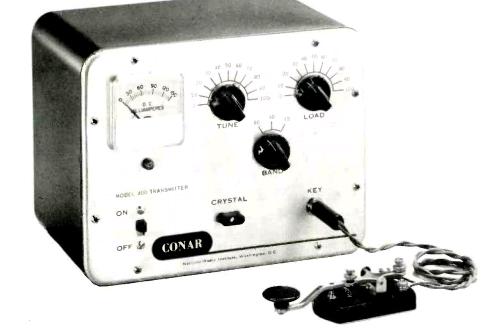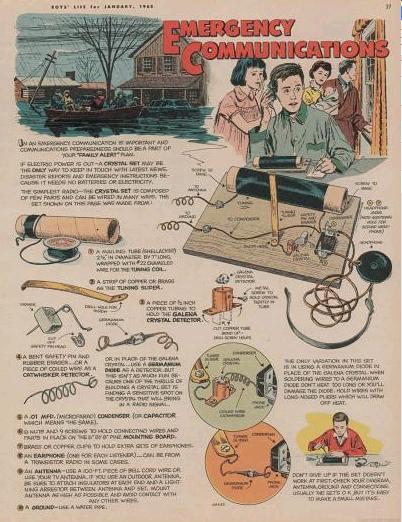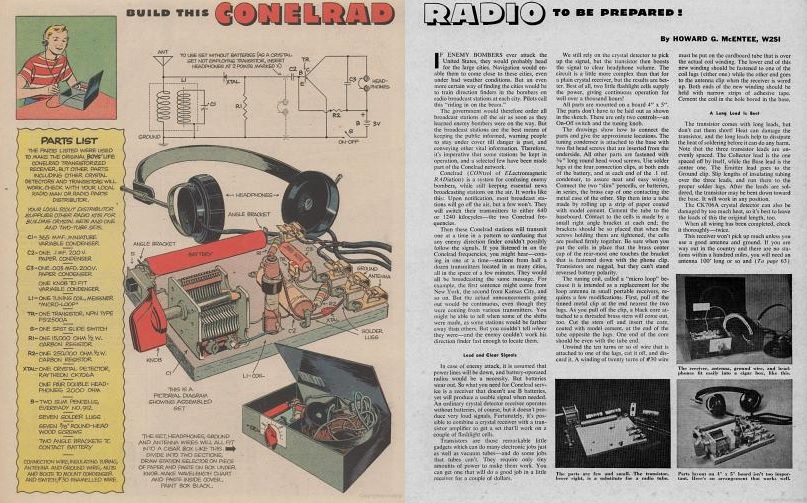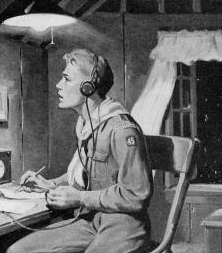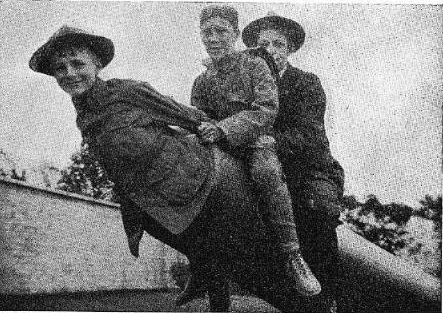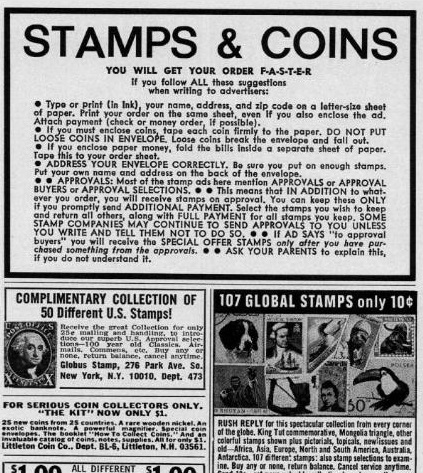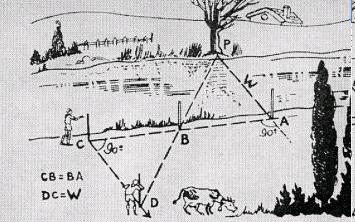 People sometimes ask what is the most important thing that youth learn from Scouting. They usually expect to hear something along the lines of that it “builds character.” In some cases, it is probably true that Scouting builds character, but I honestly can’t point to too many people who would have wound up being bad characters if they hadn’t been in Scouting.
People sometimes ask what is the most important thing that youth learn from Scouting. They usually expect to hear something along the lines of that it “builds character.” In some cases, it is probably true that Scouting builds character, but I honestly can’t point to too many people who would have wound up being bad characters if they hadn’t been in Scouting.
A better reason why Scouting is important is summed up in this diagram, which appeared in Boys’ Life magazine 70 years ago, February 1945. That’s not to say that measuring the width of a river is a particularly important skill in the scheme of things. In fact, I don’t recall ever being taught this particular method. But it’s illustrative of something I did learn, without knowing that it was being taught. What I really learned was that when I’m faced with some obstacle, it is usually possible to achieve the desired result, by applying a little bit of thought. But the first step is to know that there is a solution to the problem. Once a person realizes that, then finding the actual solution (or more often, one possible solution out of many) is usually pretty simple.
In this illustration, the Scout needs to know the distance across the river. The article, written by William “Green Bar Bill” Hillcourt, explains the method being used here. He starts at point A, which is directly across the river from a given point with a convenient object, in this case, a tree. He then walks along the river a set distance, such as 100 paces, and places a stick at that point. He then keeps walking that same distance. When he reaches the point marked C, he walks at a right angle, and keeps going until he’s along the same line containing the tree and the stick. At that point, the distance he’s walked away from the river is equal to the width of the river.
There are certainly other methods to figure out the distance, another one of which is also shown. But one method, which seems to be the most commonly used these days, is to consult outside information. It’s usually possible to ask someone who knows the answer. And it’s even possible to go to Google Maps, look at the image, and get the exact width. Those are very valid methods, and in many cases, they are more convenient and better methods. But the Scout learns that they are not the only methods. Even if outside assistance is not available, it is possible to figure things like this out on your own, without outside help.
I never really realized this until a few years back, when I started hearing from RV’ers that they couldn’t possibly camp in a non-electric site. I happen to enjoy the convenience of electric power, and if it’s available, I gladly take advantage of it. But I don’t view it as a necessity. When pressed, these people invariably come up with the same rationale for needing electricity: They need it in order to plug in their electric coffee maker.
Now, I drink a lot of coffee, and I probably drink more coffee than most of those people. So I understand their need for coffee. But I also realize one thing that they don’t know: I know that there are many methods of making coffee that don’t involve the friendly local electric utility. In response to their concerns, I even created a website entitled “How To Make Coffee Without Electricity.” That website is written in a somewhat tongue-in-cheek style. But it’s also full of information that people don’t know, even though I always assumed that it was just common sense. It’s probably common sense to me because I was in Boy Scouts. I know that I can figure out the width of a river even if Google Maps is unavailable. So it stands to reason that I can figure out how to make coffee even if the power happens to be out.
There must be a lot of people who weren’t Scouts. Whenever a hurricane is bearing down on some part of the English-speaking world, my coffee page starts to get hundreds of hits. A day or two before the storm, these are from desktop computers. The day after the storm makes landfall, the number of hits increases, but most of them are from mobile devices. In other words, the power goes out, and only then they realize that they don’t know how to make a cup of coffee. I’m glad their mobile device is still working, and I’m glad that Google is still working, and I’m happy to impart my lifesaving knowledge that it is, indeed, still possible for them to make a cup of coffee.
But I worry about these people if Google ever becomes unavailable for some reason. Maybe they should have been Boy Scouts. I’m sure these people are of fine character, and they didn’t need Scouting to build it. But learning the lesson that self-reliance is usually possible probably would have served them well.
Click Here For Today’s Ripley’s Believe It Or Not Cartoon

